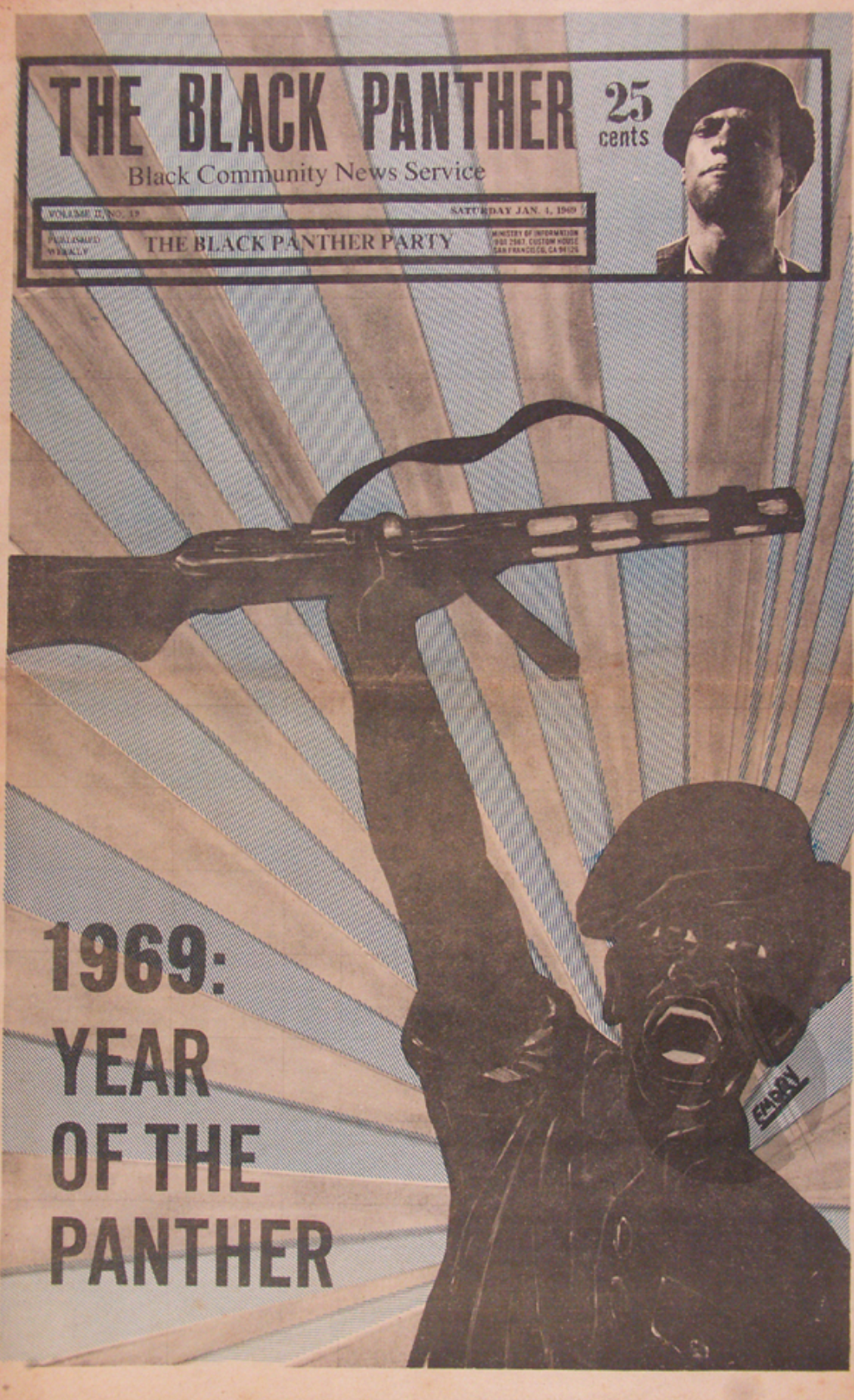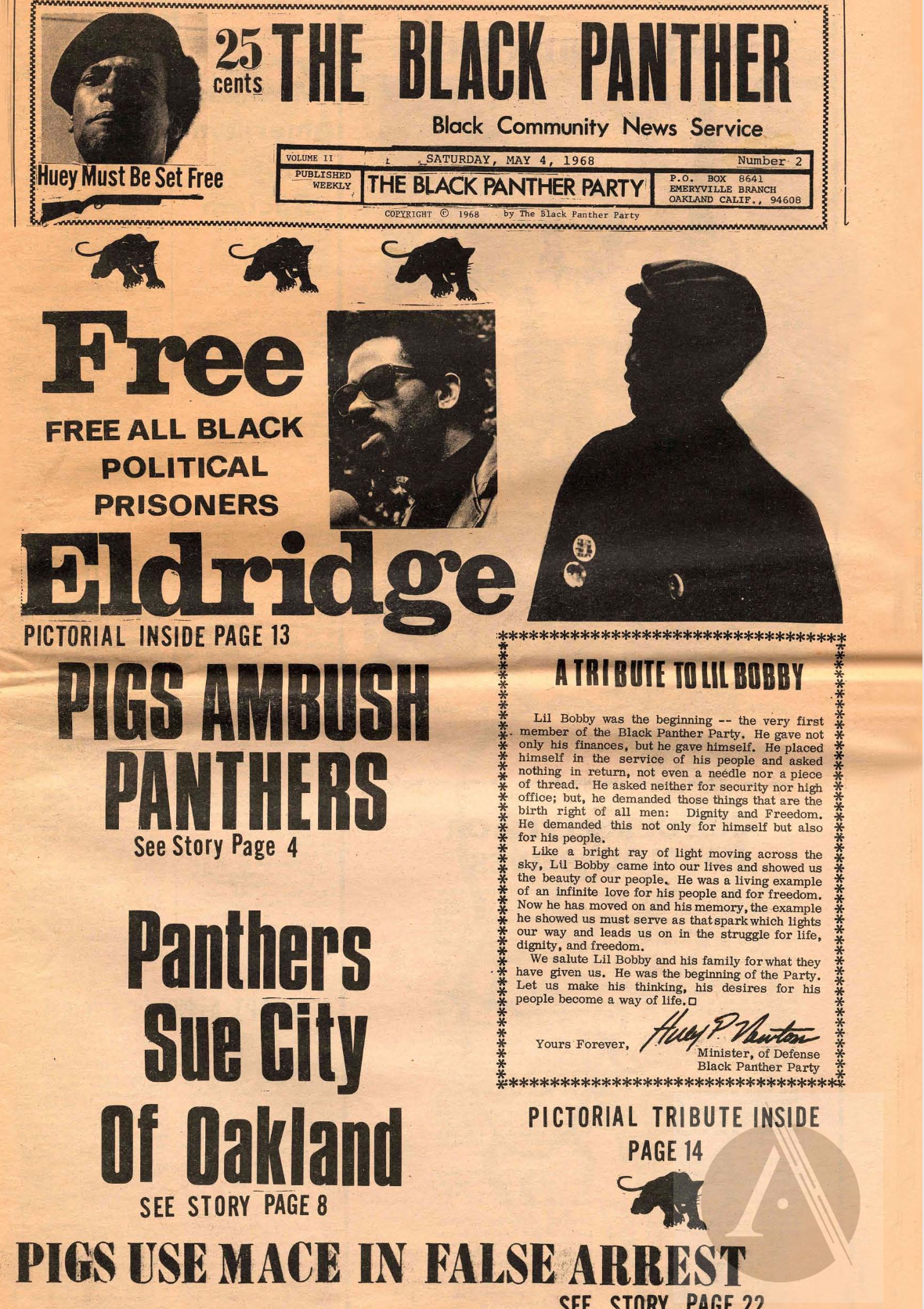THE BLACK PANTHER PARTY
the bpp on the dugout
Some of our episodes featuring interviews with Black Panther Party Members or covering their era of politics
HOW THEY STARTED
The Black Panther Party for Self-Defense was founded in October 1966 in Oakland, California, by Huey P. Newton and Bobby Seale, two students at Merritt College who were deeply influenced by the teachings of Malcolm X, the writings of Frantz Fanon (The Wretched of the Earth), and the systemic violence they witnessed daily in West Oakland. After watching police brutalize Black residents with impunity, Newton and Seale drafted the 10-Point Program — a set of demands and beliefs that outlined their revolutionary vision for Black liberation. Their first major organizing tactic was to form armed patrols to monitor and observe police officers during traffic stops and street encounters. Using California’s open-carry laws, they followed officers while carrying legally registered firearms and law books, asserting both their Second Amendment rights and their right to self-defense.
This practice of policing the police quickly gained national media attention and drew the ire of local authorities and the FBI. But the Panthers’ strategy went beyond armed resistance. By 1967, the organization had grown to include a formal membership structure, daily political education classes, and connections with anti-imperialist movements abroad. Newton described the Party as a revolutionary vanguard rooted in Black self-determination, anti-capitalism, and internationalism. Their approach was intentionally dual: resist state violence through direct action and simultaneously build alternatives through community-led survival programs. What began as two young organizers in Oakland rapidly evolved into a national network of chapters in cities like Chicago, New York, Los Angeles, and beyond.
KEY MEMBERS OF THE BLACK PANTHER PARTY
HUEY NEWTON / BOBBY SEALE / ERICKA HUGGINS / ELAINE BROWN / BOBBY HUTTON / ELDRIGE CLEAVER / FRED HAMPTON / JAMAL JOSEPH / ASHANTI ALSTON
tHE BLACK PANTHER NEWSPAPER
In 1967, the Black Panther Party launched The Black Panther newspaper to serve as a mouthpiece for the movement and a direct challenge to the misinformation spread by mainstream media. Initially edited by Eldridge Cleaver and later by figures like Judy Juanita and David Hilliard, the newspaper became a vital communication tool between chapters and with the broader public. It reported on police killings, community struggles, international liberation movements, and internal Party work. At its peak in 1970, the paper had a weekly circulation of over 139,000 copies and was published in cities across the U.S., including Oakland, Chicago, New York, and Los Angeles (Bloom & Martin, 2013).
The Black Panther was more than a newsletter — it was a political education tool. Each issue opened with the Party’s 10-Point Program and featured original artwork by Minister of Culture Emory Douglas, whose illustrations became iconic representations of Black resistance. It was sold for 25 cents by rank-and-file Party members, who often used the paper to engage community members in political conversation and organize locally. The newspaper also ran coverage of anti-colonial struggles in Algeria, Vietnam, Mozambique, and Palestine, linking Black liberation to global resistance against imperialism.
In 1974, JoNina Abron (later JoNina Abron-Ervin) became the final editor of The Black Panther newspaper. She had joined the Party in 1972 while attending graduate school and took over editorial leadership during a pivotal period when the BPP had centralized operations in Oakland and shifted toward survival programs like the Oakland Community School. Under Abron's direction, the newspaper maintained a sharp focus on prison conditions, political prisoners, women in the movement, and Black self-determination. She oversaw the publication until it ceased in 1980, and her leadership preserved the Party's political clarity during years of FBI harassment and internal reorganization (Abron-Ervin, 2020).
READ A BPP NEWSPAPER ARCHIVE
bpp influenced…
the dalit panthers
The Dalit Panther Party was founded in July 1972 in Mumbai (then Bombay), India, as a militant organization committed to dismantling the deeply entrenched caste system and fighting for the rights of Dalits—the socially ostracized “untouchable” communities historically subjected to brutal oppression. The Panthers emerged in response to the slow and often tokenistic reforms post-Indian independence, asserting a bold new form of Dalit resistance grounded in self-respect, cultural pride, and political activism.
Drawing inspiration from the Black Panther Party, established in the United States in 1966, the Dalit Panthers adapted the model of revolutionary self-defense, community organizing, and cultural assertion to India’s unique caste context. Although no formal organizational ties existed, the Dalit Panthers identified with a global movement against racial and caste oppression, situating their struggle within international anti-colonial and human rights frameworks.
Founding and Ideological Roots
The movement was established in June 1972 by poets and activists Namdeo Dhasal, J.V. Pawar, and Raja Dhale, among others. Dhasal, a prominent Marathi poet, was particularly influenced by the Black Panther Party's emphasis on self-defense, cultural pride, and revolutionary politics. The Dalit Panthers adopted a similar approach, combining Marxist ideology with Ambedkarite principles to address the systemic oppression faced by Dalits.
Their manifesto, released in 1973, rejected mere reforms and called for a complete revolution to overthrow the caste-based social order. It emphasized the need for a radical transformation of society, advocating for the empowerment of Dalits and other marginalized communities.
the dalit panthers: a timelime
1947 – Indian Independence and Constitutional Promise
India gains independence from British colonial rule. Dr. B.R. Ambedkar, a Dalit leader and principal architect of the Indian Constitution, ensures that the new constitution outlaws “untouchability” (Article 17) and provides affirmative action (reservations) for Scheduled Castes (Dalits) in education, employment, and political representation. This legal framework aims to dismantle caste discrimination officially.
1950s–1960s – Persistent Discrimination Despite Legal Protections
Despite constitutional guarantees, caste-based discrimination remains pervasive, especially in rural areas and urban slums. Dalits continue to be socially ostracized, economically marginalized, and subjected to violence and segregation. Political gains are limited, and many Dalits remain trapped in cycles of poverty and exclusion.
Late 1960s – Rise of Dalit Assertion and Cultural Awakening
A growing Dalit literary and social movement develops, especially in Maharashtra, fueled by the works of writers like Baburao Bagul and poets such as Namdeo Dhasal. This period marks an awakening of Dalit consciousness, shifting from reformist approaches toward a more militant and radical critique of the caste system and broader social inequality.
June 1972 – Formation of the Dalit Panther Party
In Siddharth Nagar, a Dalit-dominated neighborhood in Mumbai, a group of young Dalit intellectuals, poets, and activists—including Namdeo Dhasal, J.V. Pawar, and Raja Dhale—formally establish the Dalit Panther Party. Inspired by the militant Black Panther Party in the U.S., they seek to confront caste oppression head-on, rejecting gradual reform and advocating for revolutionary change. Their manifesto calls for self-defense, cultural pride, and radical transformation of Indian society.
1973 – Manifesto and Rapid Growth
The Dalit Panthers publish their manifesto, articulating a Marxist-Ambedkarite critique of caste and capitalism. The movement spreads beyond Mumbai, attracting a growing membership among Dalit youth frustrated with slow progress and systemic violence.
February 1974 – Worli Riots
During a Dalit Panthers rally in Mumbai’s Worli area, tensions flare when a Panther activist is killed by stone-throwing upper-caste opponents. The clash escalates into violent riots involving Dalits, upper-caste groups, and police repression. The riots expose the deep social fissures and heighten the Panthers’ visibility as defenders of Dalit rights and dignity.
1975–1977 – Emergency and State Repression
Prime Minister Indira Gandhi declares a national Emergency, suspending civil liberties. The Dalit Panthers face intensified crackdowns: leaders are arrested, activists intimidated, and publications censored. This period severely weakens the movement’s organizational strength.
Late 1970s – Internal Divisions and Decline
Factionalism grows within the Panthers as some members opt for electoral politics and alliances with mainstream parties, while others maintain a radical stance. The state’s repression, ideological splits, and political co-optation lead to fragmentation and decline of the movement as a united force.
Early 1980s – Disbandment and Legacy Formation
The Dalit Panthers officially disband by 1988, but their cultural and political legacy persists. Members continue influencing Dalit politics and literature, inspiring subsequent generations of activists and writers.
2000s–Present – Enduring Influence and Commemoration
The Panthers are remembered as pioneers of militant Dalit resistance. Their literary contributions, particularly Namdeo Dhasal’s poetry, are celebrated for reshaping Dalit identity and political consciousness.
In 2022, the 50th anniversary of the Panthers’ founding is marked by events in India that bring together former Dalit Panther leaders and Black Panther veterans from the U.S., underscoring their shared commitment to combating systemic oppression globally.
An Excerpt From The Dalit Manifesto
Today we, the 'DaHt Panthers', complete one year of our existence. Because of its clear revolutionary position, the 'Panthers' is' growing in strength despite the strong resistance faced by it from many sides. It is bound to grow because it has recognized the revolutionary nature and aspirations of the masses with whose smiles and tears it has been bound up since its inception. During last year, motivated attempts have been made, especially in the far comers of Maharashtra, to create misunderstandings about our members and our activities. Misconceptions about the objectives of the 'Panthers', about our commitment to total revolutionary and democratic struggles, and about its policies, are being spread. It has, therefore, become necessary clearly to put forward our position. Because, 'Panthers' no longer represent an emotional outburst of the dalits. Instead, its character has changed into that of a political organization. Dr. Babasaheb Ambedkar always taught his followers to base their calculations about their political strategy on deep study of the political situation confronting them. It is necessary and indispensible for us to keep this ideal before us. Otherwise we might mistake the back of tortoise for a rock,' and may be drowned in no time.
An Excerpt From The Dalit Manifesto
Today we, the 'DaHt Panthers', complete one year of our existence. Because of its clear revolutionary position, the 'Panthers' is' growing in strength despite the strong resistance faced by it from many sides. It is bound to grow because it has recognized the revolutionary nature and aspirations of the masses with whose smiles and tears it has been bound up since its inception. During last year, motivated attempts have been made, especially in the far comers of Maharashtra, to create misunderstandings about our members and our activities. Misconceptions about the objectives of the 'Panthers', about our commitment to total revolutionary and democratic struggles, and about its policies, are being spread. It has, therefore, become necessary clearly to put forward our position. Because, 'Panthers' no longer represent an emotional outburst of the dalits. Instead, its character has changed into that of a political organization. Dr. Babasaheb Ambedkar always taught his followers to base their calculations about their political strategy on deep study of the political situation confronting them. It is necessary and indispensible for us to keep this ideal before us. Otherwise we might mistake the back of tortoise for a rock,' and may be drowned in no time.







